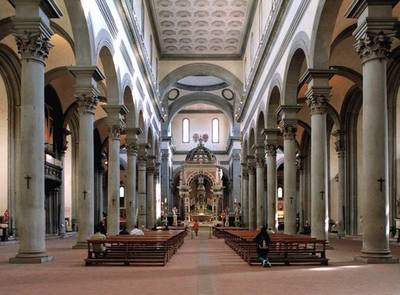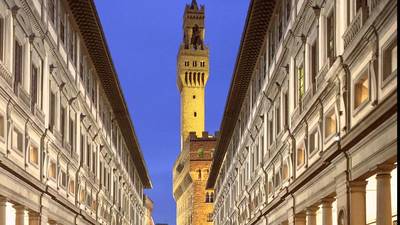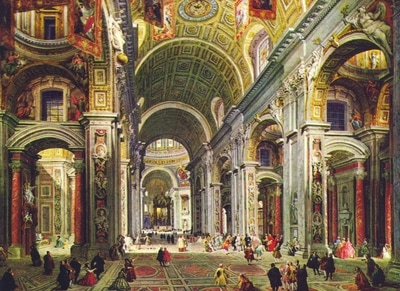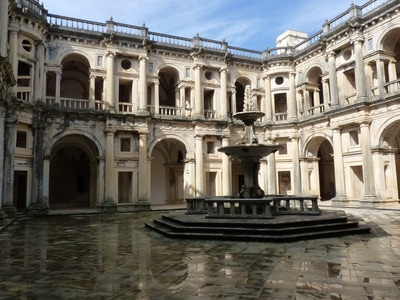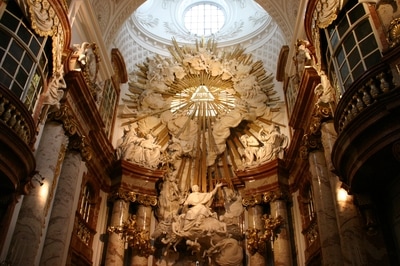RENAISSANCE ARCHITECTURE
"Renaissance architecture, style of architecture, reflecting the rebirth of Classical culture, that originated in Florence in the early 15th century and spread throughout Europe, replacing the medieval Gothic style. There was a revival of ancient Roman forms, including the column and round arch, the tunnel vault, and the dome. The basic design element was the order. Knowledge of Classical architecture came from the ruins of ancient buildings and the writings of Vitruvius. As in the Classical period, proportion was the most important factor of beauty; Renaissance architects found a harmony between human proportions and buildings. This concern for proportion resulted in clear, easily comprehended space and mass, which distinguishes the Renaissance style from the more complex Gothic."
BAROQUE ARCHITECTURE
"Baroque architecture, architectural style originating in late 16th-century Italy and lasting in some regions, notably Germany and colonial South America, until the 18th century. It had its origins in the Counter-Reformation, when the Catholic Church launched an overtly emotional and sensory appeal to the faithful through art and architecture. Complex architectural plan shapes, often based on the oval, and the dynamic opposition and interpenetration of spaces were favoured to heighten the feeling of motion and sensuality. Other characteristic qualities include grandeur, drama and contrast (especially in lighting), curvaceousness, and an often dizzying array of rich surface treatments, twisting elements, and gilded statuary. Architects unabashedly applied bright colours and illusory, vividly painted ceilings."
ART NOUVEAU ARCHITECTURE
"Art Nouveau, ornamental style of art that flourished between about 1890 and 1910 throughout Europe and the United States. Art Nouveau is characterized by its use of a long, sinuous, organic line and was employed most often in architecture, interior design, jewelry and glass design, posters, and illustration. It was a deliberate attempt to create a new style, free of the imitative historicism that dominated much of 19th-century art and design."
